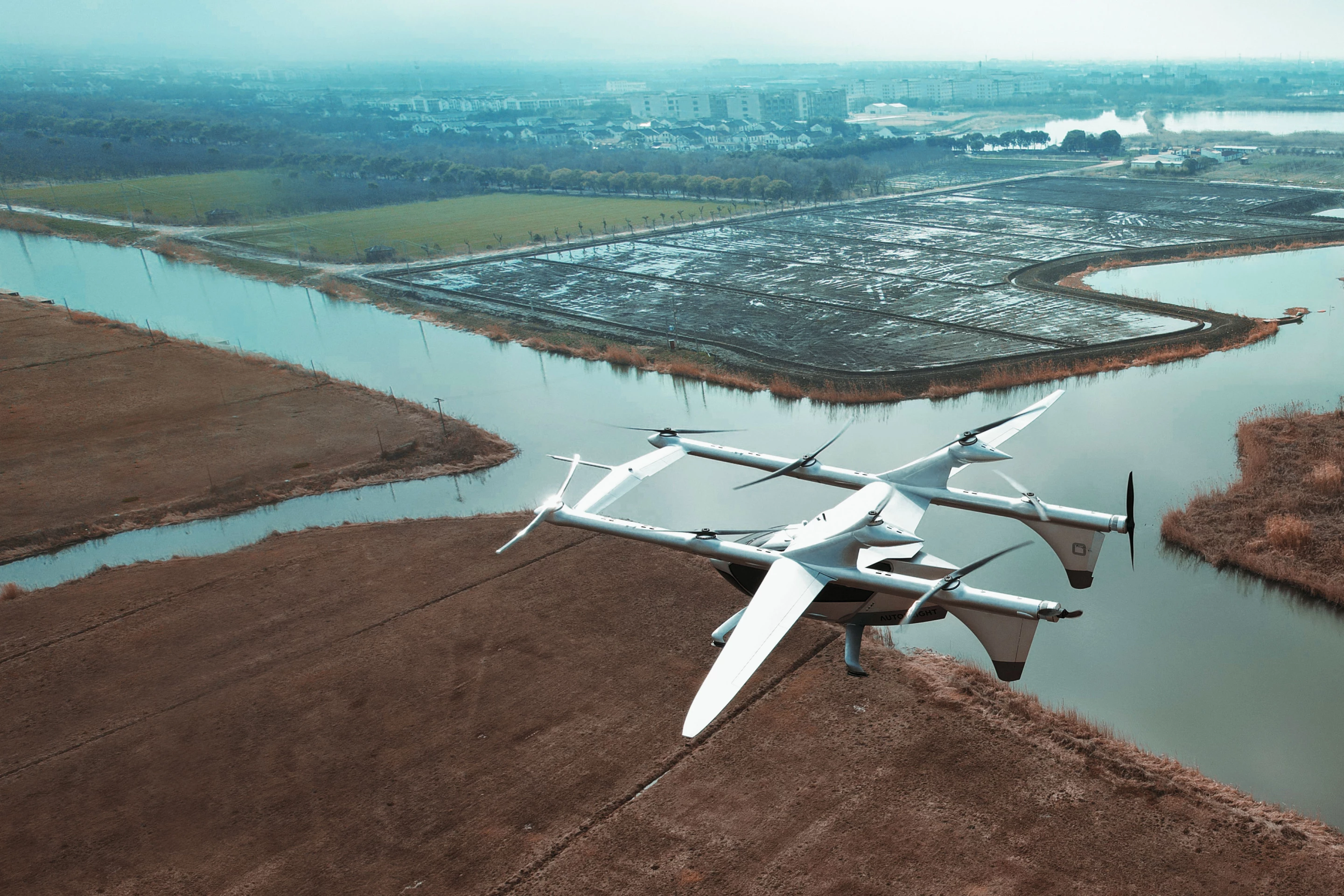Chinese eVTOL company Autoflight has released video of its first unmanned transition flight, moving from vertical lift to wing-supported cruise at speed. The video is a perfect demonstration of the common "lift & cruise" style of eVTOL design.
It's a significant milestone for Autoflight, which has opened an office in Germany recently in order to take aim at the European air taxi market. The aircraft, Prosperity I, is a 4-seat piloted design that promises a range of 155 miles (250 km) at cruise speeds up to 124 mph (200 km/h).
It's a lift & cruise design, with the passenger pod supported on a pair of large wings. These feature long propulsion pods running front to back, which hold three large lift props apiece, and a fourth pair are elevated to a higher plane to keep the aircraft compact. The propulsion pods are linked at the front by an additional front wing, complete with control surfaces, and there's a pusher prop at the rear of the cabin for horizontal flight.

Today's video shows the proof of concept climbing vertically to 150 m (492 ft), then turning slightly and engaging the pusher prop. At around 97 knots (112 mph, 180 km/h), the transition to winged flight is complete, and you can see the lift props coming to a stop, then slowly orienting themselves longitudinally for minimum drag as the plane continues flying on the wing. It sure looks like you'll be able to feel it when those lift props shut down, although it's nothing compared to turbulence on an airliner.
Similarly, when it transitions back to VTOL mode, you can see the plane pitch back quite pointedly as the lift props work to slow it down for what's eventually a smooth and gentle autonomous landing. The team says the aircraft maxed out at 123 mph (198 km/h) on this flight, which was launched from Autoflight's test facility in JiangSu Province sometime in January.
There's a long way to go yet before certification, which Autoflight hopes to achieve both with China's CAAC and Europe's EASA by 2025. In a press kit, the company lays out its claim to supremacy over other eVTOL companies: "the existing solutions are either low performance or high complexity. Both approaches lead to high costs per passenger mile. Furthermore most players tap into traditional aviation supply chains, which are not designed for VTOL, and thus result in unreasonable costs."

By using a simple lift & cruise concept with solid performance figures, manufacturing most of its own parts, hitting the market relatively early and deploying a "powerful business model (combination of high ~70% margin aircraft sales and ultrahigh ~95% margin per usage software fees/maintenance," Autoflight believes it should be bringing in US$100 billion a year by ~2031, for a valuation over a trillion dollars.
Confidence is clearly not lacking here. Let's see how they go! Check out the video below.
Source: Autoflight











